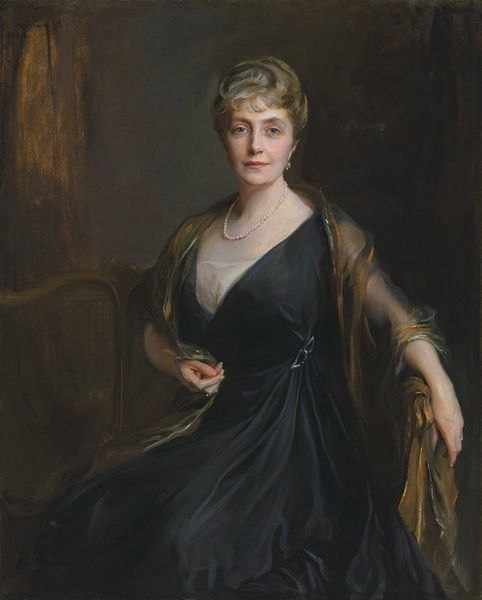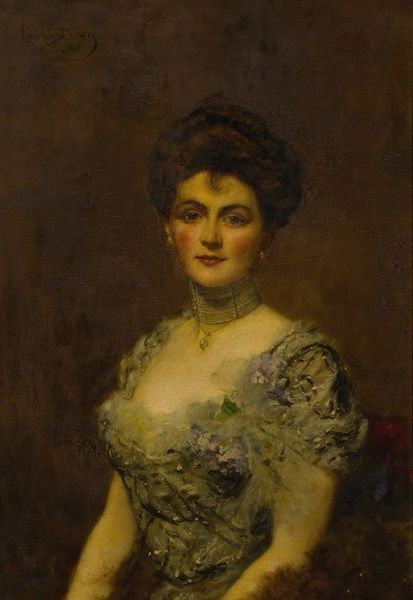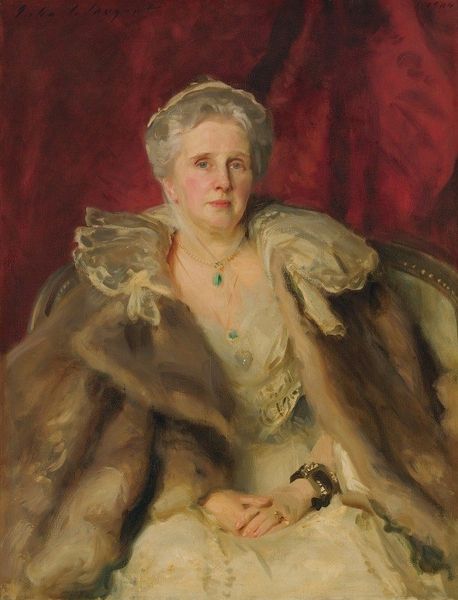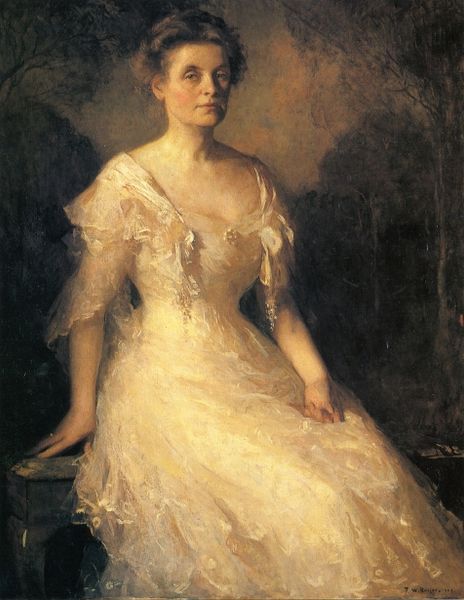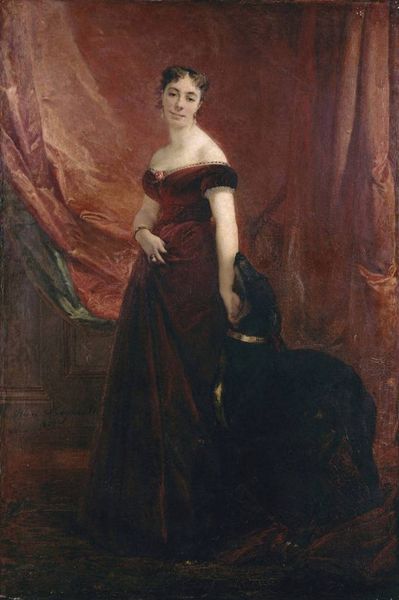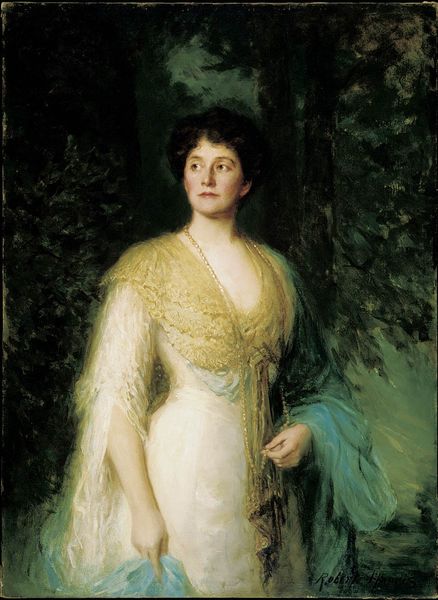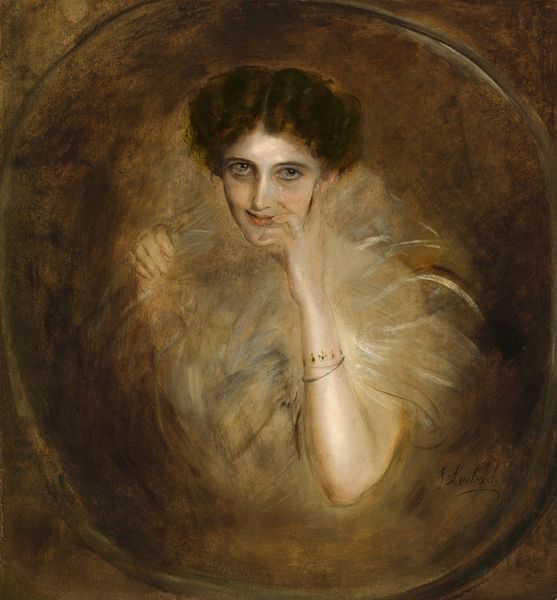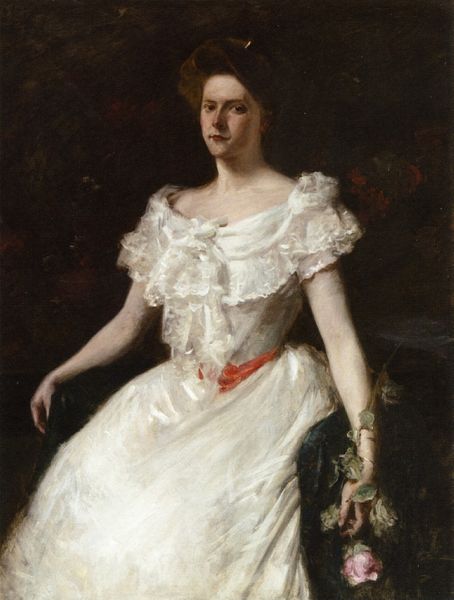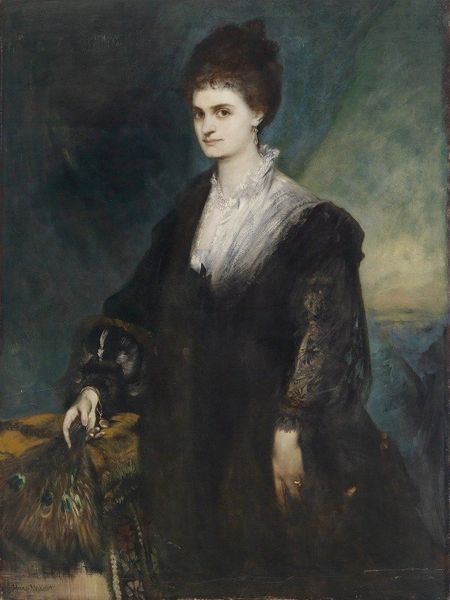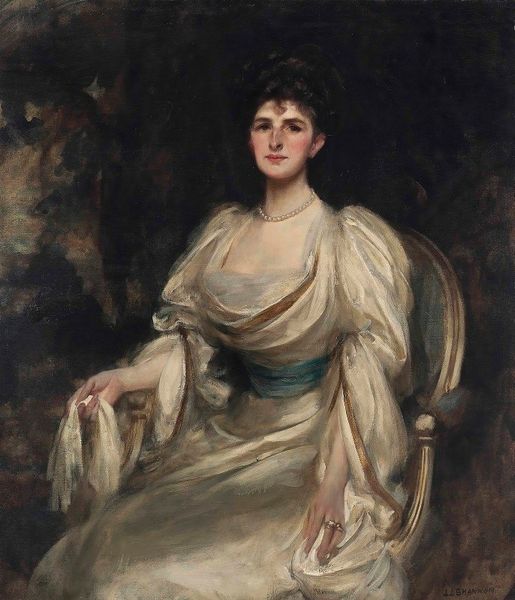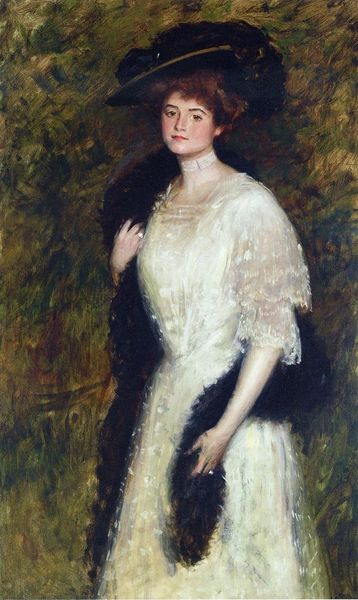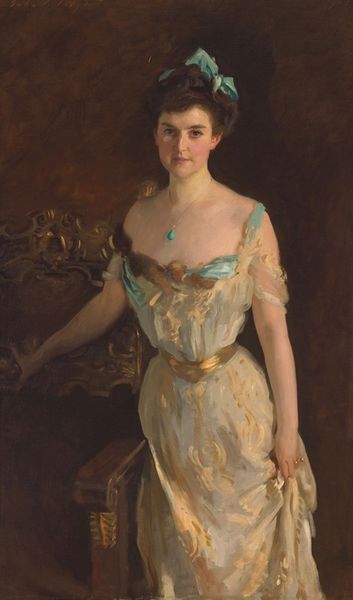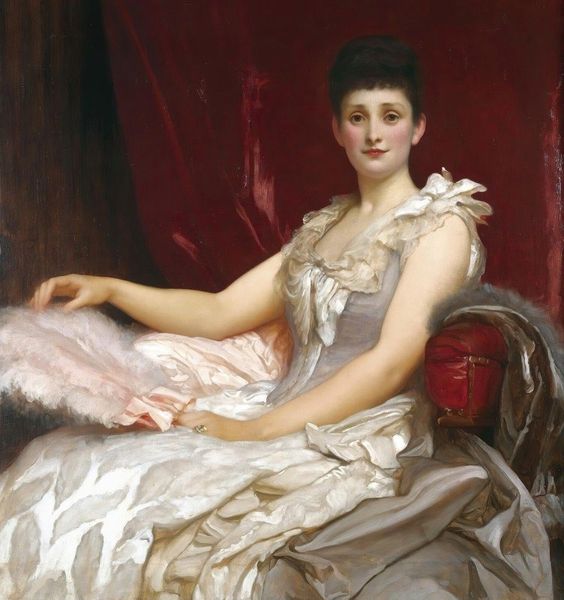
Copyright: Public domain
Editor: This is Wilhelm von Kaulbach's portrait of "Prinzessin Marie Gabrielle Von Bayern," painted in 1890 with oil paint. It's such a striking image. Her red dress really pops against that dark background, almost like she's stepping out of the shadows and demanding to be seen. How would you interpret this piece? Curator: It's a fascinating example of late 19th-century portraiture, firmly situated within the context of both Romanticism and emerging Realism. Notice the almost theatrical presentation of the princess – her vibrant gown, the pearls, the fur stole. How do you think this contributes to the message of the artwork? Editor: It definitely projects an image of status and power, almost a staged formality. But it also feels… restricted, perhaps reflecting societal constraints placed upon women of that era, even royalty? Curator: Precisely! The painting isn’t just a depiction of Marie Gabrielle, but a carefully constructed image meant to reinforce specific societal norms and expectations. This academic approach to art served particular political and social functions. Considering the public role of royal portraits at the time, what impression do you think the Bavarian monarchy aimed to convey? Editor: Probably one of stability, wealth and beauty. Although to modern eyes, there is an undercurrent of melancholia, perhaps because we now recognize this level of representation as artifice. It is not a spontaneous rendering of its subject, and it makes me reflect on how history treats women as symbols. Curator: Exactly! It’s a testament to how art serves as a window into social and cultural dynamics. Reflecting on this, has your perspective shifted on the relationship between portraiture and power? Editor: Absolutely. It is more than just art. It becomes an artifact about a period, society, and politics. Curator: Indeed! It invites questions about power, gender and the evolving nature of representation itself.
Comments
No comments
Be the first to comment and join the conversation on the ultimate creative platform.
